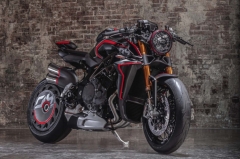Can we expect electric motorcycles to become mainstream in the Philippines anytime soon?
It certainly looks like we still have a long way to go before we can even think of ditching our gas-powered two-wheelers.

In the global market, especially in our neighboring Asian countries as well as a large part of Europe, electric motorcycles have been rapidly increasing in popularity. Several factors are to blame for the sudden increase in popularity of electric motorcycles, chief of which include incentives from the government geared towards accelerating adoption of EVs, as well as a heightened awareness for environmental preservation from the general populace.
In the Philippine setting, we’re beginning to see electric vehicles—scooters and motorbikes included—popping up here and there. However, none of them have really clicked and sparked a shift in user preferences. Despite rising gas prices, people still opt to drive their cars and gas-powered two-wheelers. That being said, there are a lot of things that need to happen before EVs—be it two or four-wheeled—can become mainstream. Let’s take a closer look, shall we?
Government incentivization

In order for the Philippines to make the shift to electric mobility, there will need to be a strong enough reason for folks to do away with their gasoline powered vehicles in exchange for electric ones. Similar to what’s going on in India and France, the government could step in and roll out incentivization programs, which are designed to make the ownership of an electric vehicle a lot easier. Some perks offered to EV users in other countries include massively discounted, if not free, yearly registrations. Furthermore, road tax, as well as discounted toll fees also help to lower the cost of EVs. Incentives can also be rolled out to manufacturers and distributors. This could drastically lower market prices of EVs, as taxes can be lowered significantly for electric vehicles.
Infrastructure development

Of course, even if you make electric vehicles accessible to the masses, a major hurdle to overcome would be the infrastructure surrounding EVs. Unlike gas-powered vehicles, EVs require quite a bit longer to juice up, with some of the fastest charging times in the market taking around 15 minutes—and that’s for the best of the best when it comes to tech. As such, massive investments from both the public and private sector will be needed to make this happen. That said, it may be a gamble to place your bets on this happening anytime soon, as our economy continues to be driven by fossil-fuels.
A long way to go

In reality, here in the Philippines, we’re still lightyears away from having electric motorcycles and scooters hit the mainstream. Sure, electric scooters and motorcycles may eventually be launched here, however, chances are that the infrastructure needed for them to be as easily accessible—not to mention as easy to recharge—as their gas-powered counterparts, still has a long way to go.
Related Articles
-
Motorcycle 101: The inner workings of a slipper clutch / Featured Article
Slipper clutches are awesome as they make for more forgiving downshifts and a lighter clutch lever. Let’s take a closer look at them and see how they work.
-
5 things to remember when shopping for new motorcycle tires / Featured Article
Here are 5 things to consider when time comes for you to replace the tires on your motorcycle.
-
Here are some serious up and coming innovative motorcycle tech features / Featured Article
The motorcycle world is full of new and innovative technology. Here are a few tech features we can expect to see more of in the near future.
-
Floating versus solid disc brakes—what’s the difference and which one is better? / Featured Article
Floating discs or solid discs—which one is better and is it worth upgrading to aftermarket rotors?
-
Top 5 greatest motorcycle tech advancements of the modern era / Featured Article
Here are what we consider as the top 5 greatest motorcycle innovations of the past decade or so.
Latest Features
-
Last-minute Christmas gift ideas for your rider friends and family / Featured Article
Struggling to think of gift ideas for your motorcyclist friends and family? Read on to get some inspiration this gift-giving season.
-
Ride a naked sportbike? Get these 5 upgrades first / Featured Article
Here’s a quick list of 5 upgrades to your naked sportbike to enhance your riding experience.
-
Motorcycle 101: The inner workings of a slipper clutch / Featured Article
Slipper clutches are awesome as they make for more forgiving downshifts and a lighter clutch lever. Let’s take a closer look at them and see how they work.








